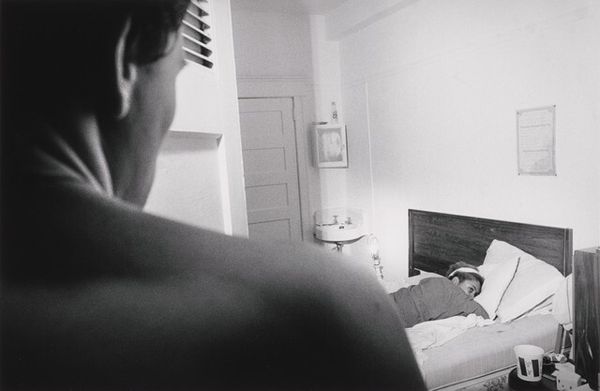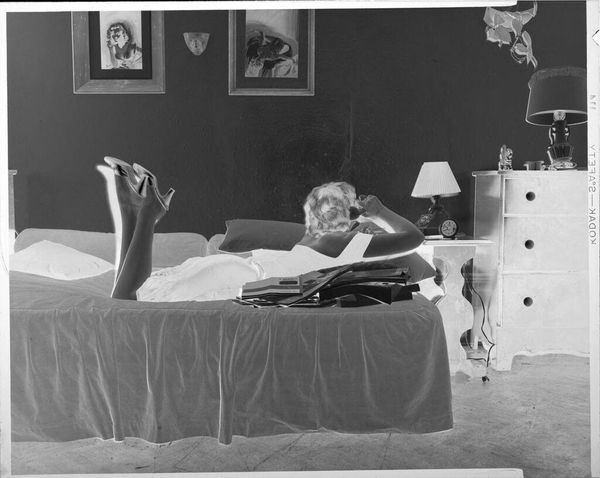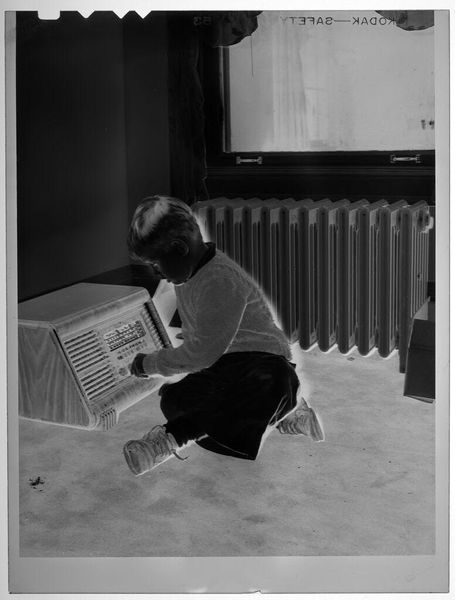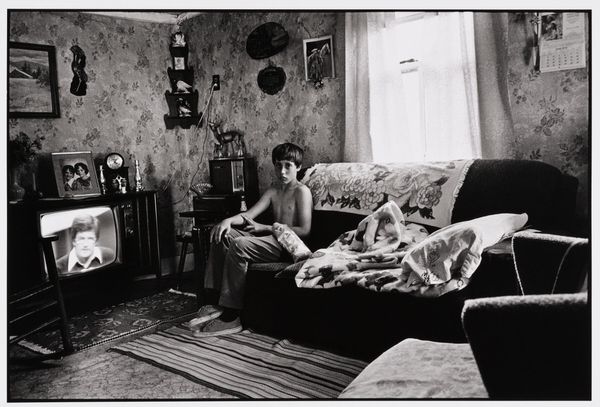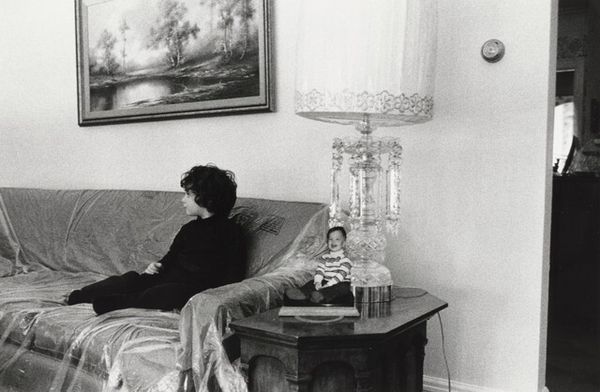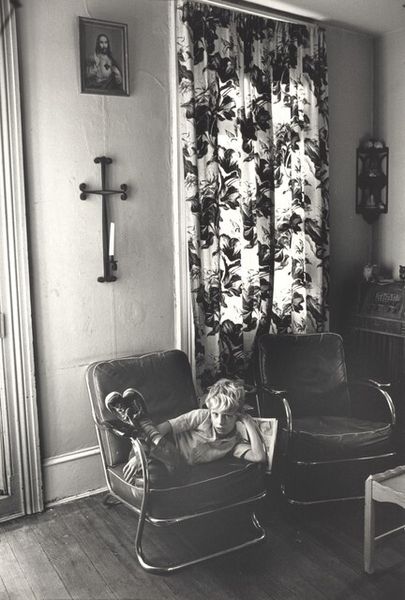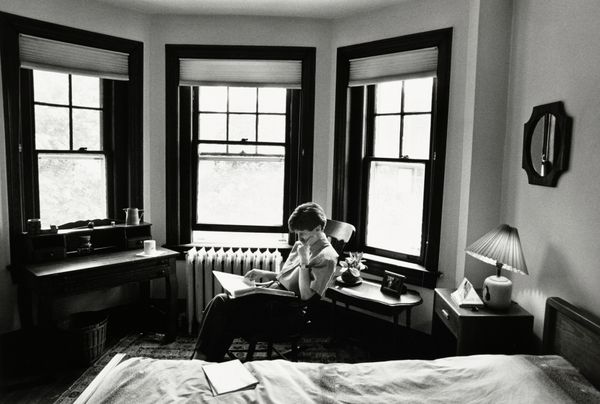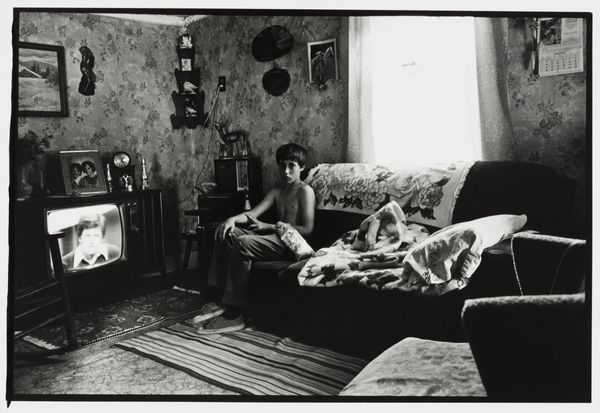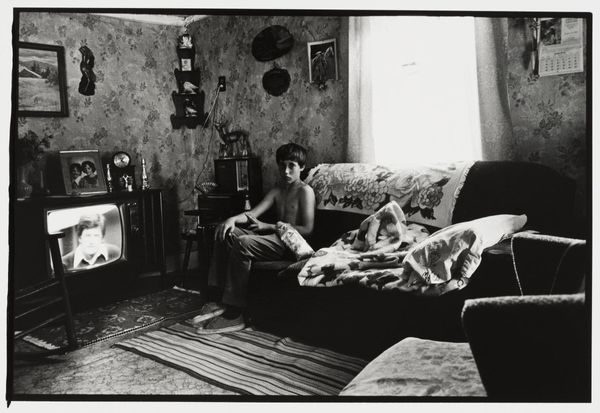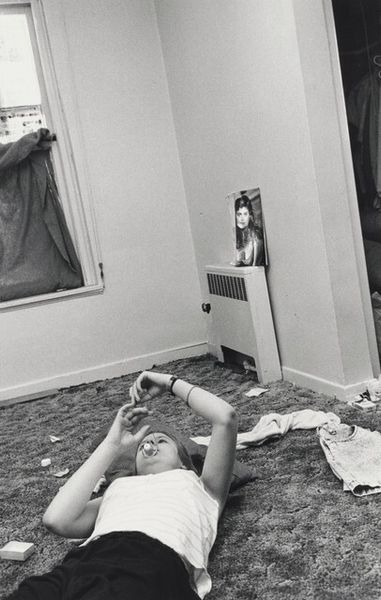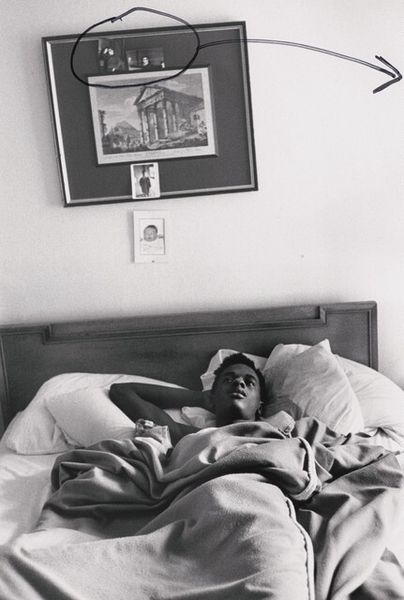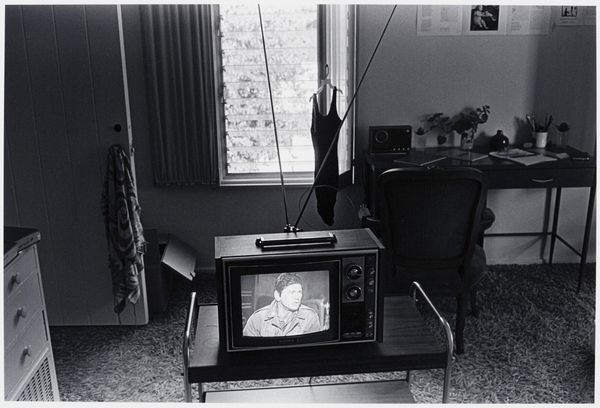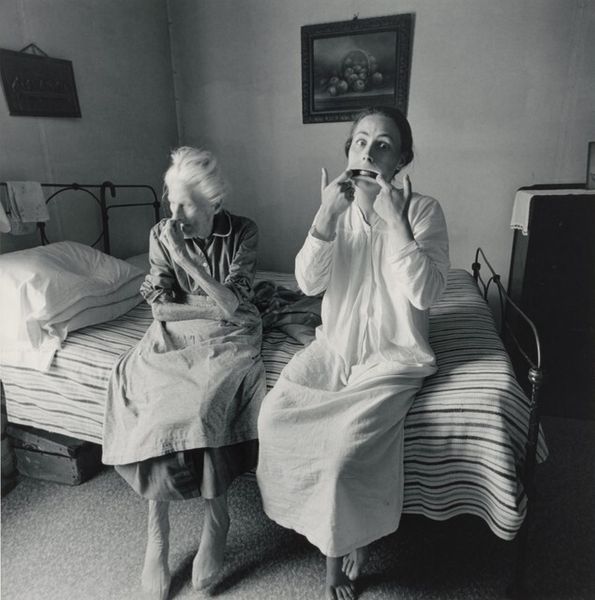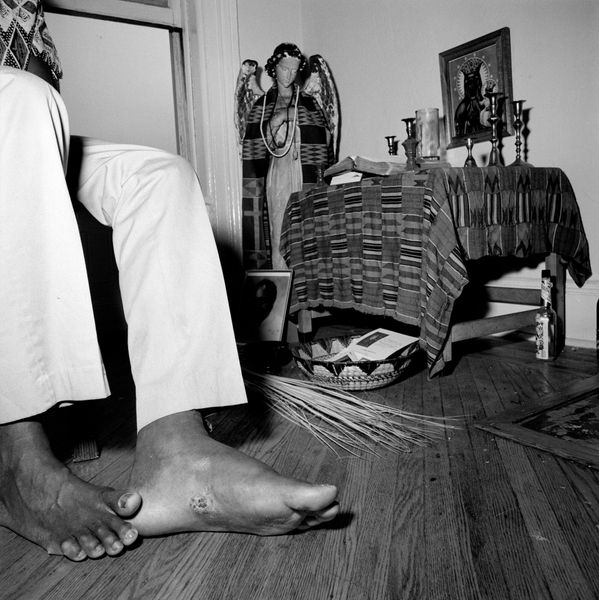
photography, gelatin-silver-print
#
portrait
#
still-life-photography
#
contemporary
#
black and white photography
#
street-photography
#
photography
#
black and white
#
gelatin-silver-print
#
monochrome photography
#
ashcan-school
#
realism
#
monochrome
Dimensions: image: 30.5 × 45.7 cm (12 × 18 in.) sheet: 40.3 × 50.9 cm (15 7/8 × 20 1/16 in.)
Copyright: National Gallery of Art: CC0 1.0
Editor: Here we have Nancy Andrews' black and white photograph, "Ruth Ellis, no. 2," created in 1993. It shows an elderly woman on an exercise machine in what looks like her living room. It feels very intimate, like a slice of real life, yet also quite staged with everything carefully placed around her. How do you interpret this work? Curator: The power here, I believe, lies in how Andrews captures everyday life, yet elevates it. In the context of '90s art, and even today, we have to ask: who gets represented, and how? This isn't a glamorous figure or a scene of overt political action. Andrews gives us a black woman, presumably older, engaged in the mundane act of exercise, centered within her own domestic space. How does the Ashcan school aesthetic play into this seemingly 'slice of life' in your opinion? Editor: Well, it’s definitely about everyday life like they captured. The composition gives me that impression –it is not a flattering angle necessarily, there’s clutter visible. The ordinariness is so obvious. But I did not necessarily expect this coming from black and white portrait photography. Curator: Precisely. Andrews is subtly subverting expectations of portraiture. She is showing the intersectionality of age, race, and gender by centering a woman who might otherwise be rendered invisible by society. The ordinariness is the radical act because it is a statement on how Black women have been marginalized from positions of power throughout history. Editor: That makes me see it differently now, the staging almost as a declaration. The woman appears proud and is at the center of everything, even the mess! Curator: Exactly. By choosing gelatin silver print and shooting in black and white, she grounds the subject in the real world and it feels honest in this domestic sphere. This photograph, through Andrews' lens, becomes a quiet act of resistance against societal norms. I appreciate you bringing that up. Editor: Thank you, it is thought-provoking to think about who is being given agency here, who is framed in art, and to question why! I am off to investigate Nancy Andrews and her focus on everyday life more!
Comments
No comments
Be the first to comment and join the conversation on the ultimate creative platform.
